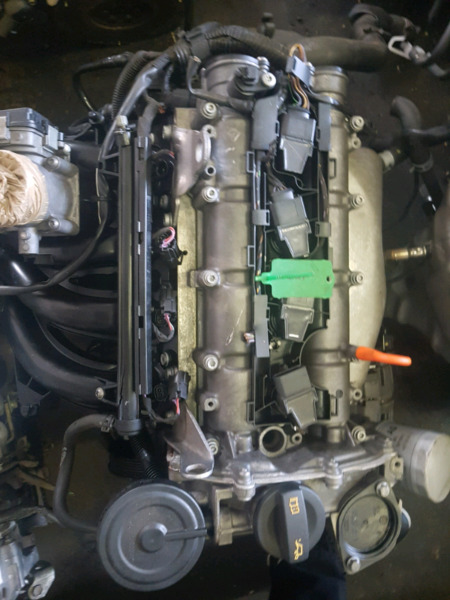Just How a Clp Engine Can Enhance Performance in Different Industries
The advent of CLP engines notes a significant change in operational performance across different sectors, driven by their capacity to optimize gas consumption and lessen downtime. Industries such as manufacturing and logistics stand to get considerably from their robust layout and consistent power result, which promise to enhance procedures and improve performance. As organizations progressively focus on sustainability alongside effectiveness, the duty of CLP engines becomes also extra vital. What continues to be to be seen is exactly how these advancements will form the future landscape of commercial procedures and their influence on wider financial trends (clp engine).
Introduction of CLP Engines
CLP engines, or Constant Liquid Propellant engines, represent a substantial innovation in propulsion modern technology, especially for area applications. These engines make use of a continuous feed system that permits for the continual expulsion of propellant, causing enhanced efficiency and efficiency compared to traditional strong or hybrid propulsion systems. By preserving a constant circulation of liquid propellant, CLP engines can achieve extra exact thrust control, which is crucial for steering spacecraft in different mission situations.
The design of CLP engines integrates sophisticated products and ingenious fuel management systems. clp engine. This causes minimized weight and enhanced integrity, necessary elements for long-duration room objectives. Furthermore, the constant procedure lessens the risk of combustion instability, an usual difficulty in standard rocket engines.

Advantages in Production
The production of Constant Liquid Propellant (CLP) engines presents several notable benefits that boost both performance and cost-effectiveness. Among the main benefits is the streamlined manufacturing procedure, which minimizes the complexity related to traditional propulsion systems. By making use of fluid propellant, makers can accomplish greater accuracy in engine efficiency, causing enhanced energy result and minimized waste.
Furthermore, CLP engines facilitate a greater level of modularity, allowing for easier assimilation into various production lines. This versatility can considerably lower preparations and improve overall functional versatility. Using CLP innovation also often tends to lessen the need for considerable maintenance due to less moving components, which translates right into reduced downtime and functional costs.

Applications in Logistics
Leveraging Constant Fluid Propellant (CLP) engines in logistics uses substantial benefits in functional effectiveness and dependability. These engines supply a durable option for different transport requirements, allowing the seamless movement of products across vast distances. The fundamental layout of CLP engines permits regular power read what he said outcome, which translates into smoother and extra predictable transport routines.
Among the essential applications of CLP engines in logistics remains in heavy-duty freight transportation, where they can drive both ground and aerial vehicles. Their ability to keep high efficiency under varying load problems makes certain that distribution timelines are satisfied, thus enhancing consumer contentment. In addition, CLP engines can be integrated into automated logistics systems, promoting real-time monitoring and optimizing course preparation.
Furthermore, the sturdiness of CLP engines reduces upkeep downtime, enabling logistics companies to optimize their operational capacities. This is especially advantageous in warehousing procedures, where effectiveness in handling and moving products is critical. As logistics proceeds to develop, the assimilation of CLP engines represents a forward-thinking strategy that not only boosts performance yet likewise sustains the industry's expanding demands for integrity and rate.
Influence On Energy Performance
Exactly How do Continual Liquid Propellant (CLP) engines improve power efficiency in transportation? CLP engines make use of a constant circulation of fluid fuel, maximizing combustion processes and preserving a secure thrust output. This style decreases energy losses related to typical combustion engines, where fuel distribution can differ and lead to ineffectiveness.
The continuous operation of CLP engines permits an extra reliable thermal cycle, resulting in higher certain impulse contrasted to conventional engines. clp engine. This translates to decreased gas intake for the very same amount of work done, considerably reducing functional prices throughout numerous transportation sectors, including air travel and maritime markets
Additionally, the capacity of CLP engines to keep optimum efficiency under differing lots problems reduces the need for frequent acceleration and deceleration, further enhancing fuel efficiency. Improved power performance not just adds to set you back financial savings yet additionally leads to lower greenhouse read what he said gas emissions, aligning with international sustainability objectives.
Future Trends and Innovations
Arising developments in Constant Liquid Propellant (CLP) engine technology promise to revolutionize the landscape of transport performance and sustainability. As markets pivot toward greener alternatives, CLP engines stand at the forefront, incorporating ingenious products and style methods that enhance performance while minimizing ecological effect.
One of the most encouraging patterns is the adoption of crossbreed systems that incorporate CLP engines with renewable resource sources. This harmony can optimize gas intake and lower emissions, aligning with international sustainability goals. Developments in computational fluid characteristics (CFD) are assisting in the design of even more aerodynamically effective engines, leading to reduced drag and boosted gas efficiency.
Additionally, the growth of clever tracking systems is established to improve operational performances. These systems leverage information analytics and IoT modern technology to enhance engine performance in real-time, making certain that the engines run within their most effective criteria.
As research proceeds to explore alternative propellant formulations-- such as biofuels and synthetic gas-- the future of CLP engines looks appealing. By using these advancements, sectors can not just boost their performance however also add considerably to a cleaner, a lot more lasting future in transport.
Conclusion
In verdict, CLP engines stand for a significant advancement in efficiency throughout several industries. Their ability to optimize fuel consumption and reduce operational expenses, integrated with a continual feed system, enhances power result and functional integrity. The integration of sophisticated products and fewer moving parts go to the website decreases maintenance demands, while placement with sustainability objectives placements CLP engines as a crucial modern technology for the future. Proceeded technology in this area promises more enhancements in efficiency and environmental performance.